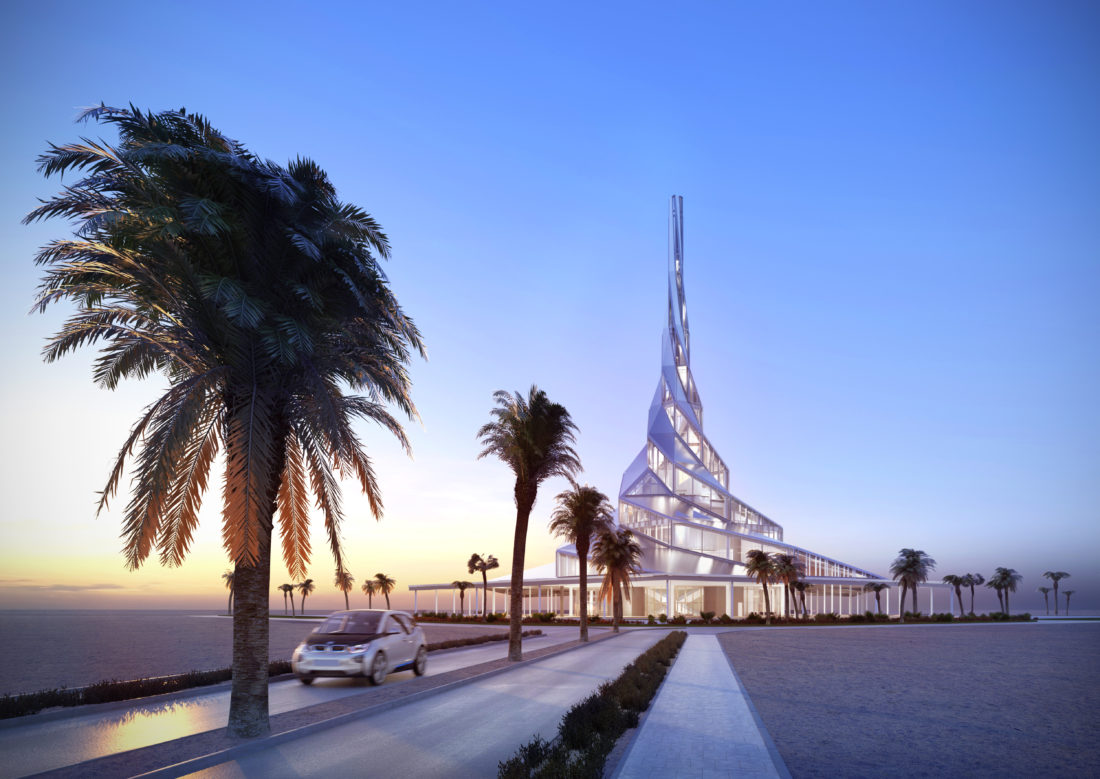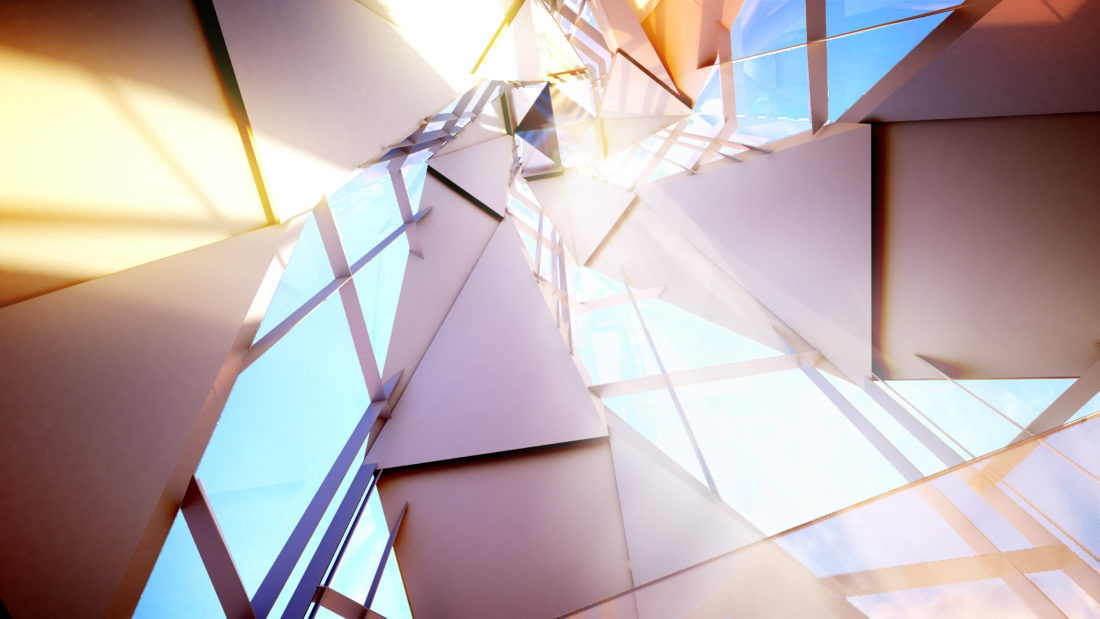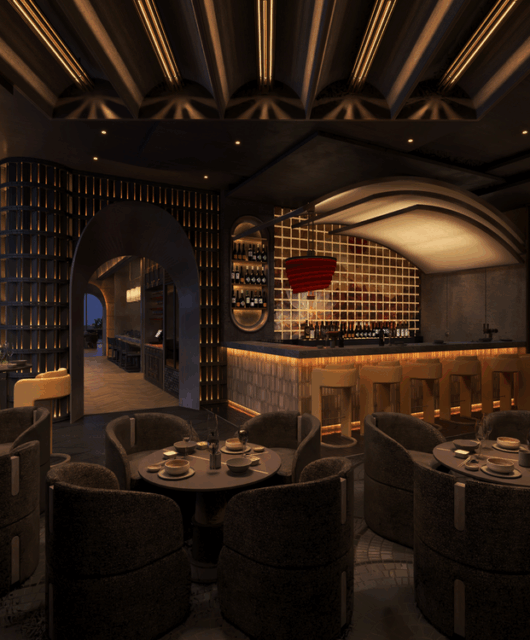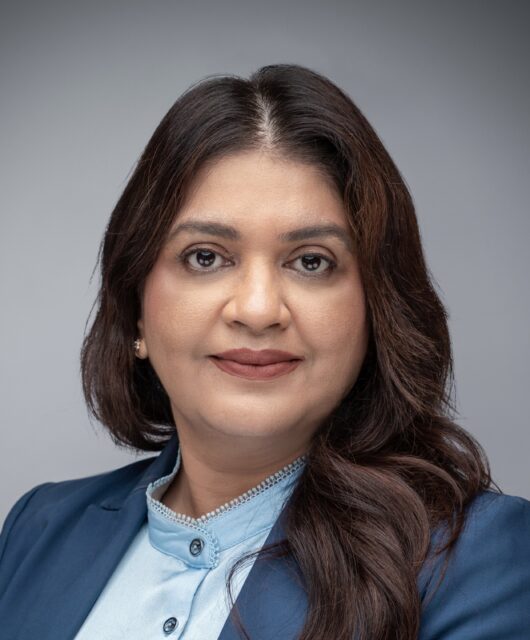
Tony Kettle, design principal at Kettle Collective, talks about the upcoming DEWA Solar Innovation Centre
Solar technology will change the way we conceptualise and design our buildings. Once complete, the DEWA Solar Innovation Centre in Dubai will showcase the latest in solar technology, not just through the design of the building itself but also through the exhibits inside. The idea is that it will become a hub for people to talk and learn about the latest in solar technology and changes that keep happening in this field. The building is expected to be completed by the end of 2019.
The Solar innovation will focus on the new form of Islamic architecture, taking inspiration from the Islamic geometry, which is normally 2D and extruding it into 3D. The building is a single square, which has been cut and extruded; it spirals up, capturing and shading the interior from the sun. The 85m building located in the heart of the Sheikh Mohammed bin Rashid
Al Maktoum Solar Park, will be the largest photovoltaic solar power facility in the region and will promote the sustainable future of the Emirate of Dubai. The building is based on the principles of ‘divine geometry’ as seen in Islamic art— extruding it into a 3D form – and is connected to its surroundings on all sides by twisting ribbons of glass. The angular formation creates dynamic and faceted interior spaces.
Every time the building gets higher, it gets smaller with the glazing elements wrapping around it in a spiral; a natural progression is taken from the Fibonacci series. This spiral form allows the integrated photovoltaic cells to take advantage of the high Middle Eastern sun, capturing more of its rays. As such, the building is at one with nature both in terms of its sustainable energy usage and through its geometry.

The building is targeted to be LEED Platinum— the highest sustainability rating achievable for a public building. The idea is to make an oasis in the desert – a shady place, naturally cooled by the wind, which blows under the open canopy beneath the building. Whilst air conditioning will still be used, the system will collect and reuse the condensate generated. However, there are still a few challenge facing the development of solar technology. It’s generally been expensive and whilst people are finding cheaper ways of making photovoltaic cells which are increasing with efficiency all the time, there is still some way to go to make them the obvious choice for generating electricity industry desert climates.
However, there are still a few challenges facing the development of solar technology. It’s generally been expensive and whilst people are finding cheaper ways of making photovoltaic cells which are increasing with efficiency all the time, there is still some way to go to make them the obvious choice for generating electricity in dusty desert climates. Photovoltaics need to be cleaned regularly; one of the biggest challenges in the desert is cleaning these without using too much water. There are new systems coming out which are self-cleaning. Dust particles (which are naturally electrically charged) are repelled by surface coverings on the panels, charged with an alternating electrical current. This new technology was originally developed for future rover missions to Mars but is ideal for conditions on earth as well.

Beyond photovoltaic cells, there are other forms of solar energy, which will be showcased within the Solar Innovation Centre. Right now, the sun’s energy is used in photovoltaic cells and converted into electricity. The system that’s really on the horizon and is being used for bigger, industrial projects is absorption chilling, where the sun’s rays are converted directly into cooling energy by using a refrigerant. This requires a very small amount of electricity; it’s a chemical reaction, which allows you to create ice directly from the sun. Although this technology isn’t currently widely available in the Middle East, I think it will become the obvious choice because it negates the current inefficiencies of solar cells.
As architects, I think we have a great responsibility to look after the world’s finite resources. This sense of responsibility drives our studio to look at ways of reducing resources to create buildings that are at one with the natural world. We’re learning from the natural world all the time, and this informs – not only our resource usage – but also the very shape and form of our buildings.







